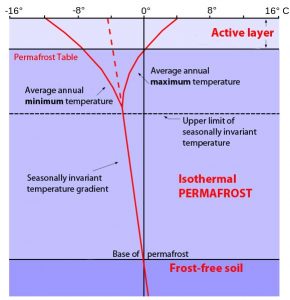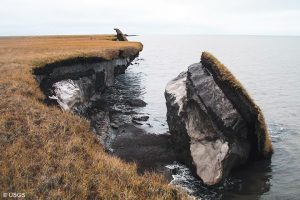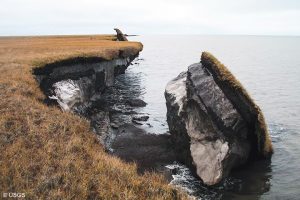Active layer
The active layer of permafrost is the top layer of permafrost that thaws during summer and freezes again during autumn.
In areas with cold summers, the active layer can be very thin (only 10 cm on Ellesmere Island in Canada, for example). In areas with warmer summers, the active layer is thicker (about 2.5 metres in Yakutsk, Russia). In the areas of discontinuous permafrost, the active layer can be also very thick (5 metres in Yellowknife, Canada).
The parent (or source) material of the soil also plays a role. Due to better conductivity, active layers in soils made of sandy or gravelly parent materials can be up to five times deeper than those made from clay-rich parent material.
Although many types of plants exist in permafrost regions, they grow largely at its active layer, since roots can’t penetrate the frozen ground beneath.
Due to global warming, the active layer of permafrost is growing thicker and warmer on average. And as the organic-rich top layer thaws, it is more likely to decay, and as the organic material breaks down, it forms methane (CH4), which can contribute even more carbon to the atmosphere.





 This project (EDU-ARCTIC) has received funding from the European Union’s Horizon 2020 research and innovation programme under grant agreement No 710240. The content of the website is the sole responsibility of the Consortium and it does not represent the opinion of the European Commission, and the Commission is not responsible for any use that might be made of information contained.
This project (EDU-ARCTIC) has received funding from the European Union’s Horizon 2020 research and innovation programme under grant agreement No 710240. The content of the website is the sole responsibility of the Consortium and it does not represent the opinion of the European Commission, and the Commission is not responsible for any use that might be made of information contained.